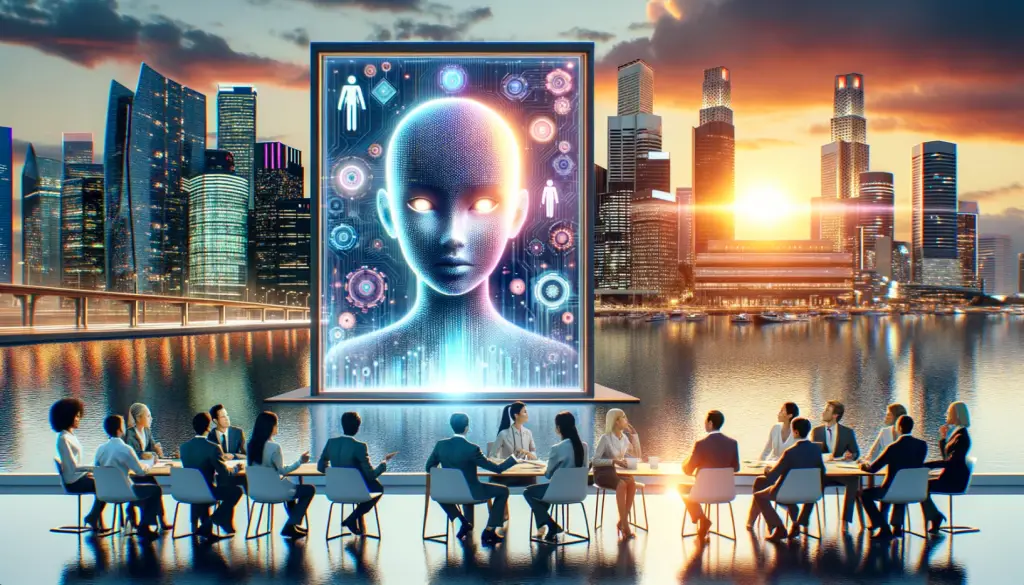With the release of Google’s Gemini and reports of GPT-4 becoming lazier, people are getting more and more impatient with the release of GPT-5. There are lots of rumors circulating about when it’s coming, mostly because of the excitement about what’s about to come.
The good news is that it’s already confirmed. The bad news is that all we have are morsels of information strewn from various interviews and blog posts.
So, I’ve collected them all and created this article to outline what’s coming and when it’s coming. In the next few minutes, I’ll give you the latest updates on GPT-5, along with some key information you might’ve missed.
Before proceeding, I highly recommend reading our article about this topic a few months ago, as the information presented here will only address developments that have occurred since then. Go on, I’ll wait.
You’re back? Great, let’s get started.
What is GPT-5?
GPT-5 is the upcoming iteration of OpenAI’s GPT model. As of January 2024, we still don’t have concrete information on what’s new with this next version, but we can reasonably assume that it’s going to bring us closer to human-level artificial intelligence. Here’s what Sam Altman, CEO of OpenAI, has to say about the matter:
“Human-level AI is coming but will change the world much less than we think”
Of course, human-level AI won’t come in the form of GPT-5. However, if Altman says that this technology is in the near future, then we can conclude that OpenAI has made significant leaps in deep learning and will apply bits of that to GPT-5 for end-user testing.
What To Expect From GPT-5: New Features
Without any real information, the best we can do is infer from various Altman interviews and other sources what’s coming to GPT-5. The following are some of what we can expect from GPT-5, along with some evidence that OpenAI is working on them.
Better Responses
ChatGPT, OpenAI’s chatbot that currently uses GPT-3.5 and GPT-4, has a huge hallucination problem. This stems from its core architecture, wherein it’s trained to respond by predicting which string of words answers your prompt best without real logic. Common symptoms of hallucination include:
- Incorrect or incomplete information.
- Missing context from prior prompts.
- Unfit answers to a prompt.
In a recent Korean interview, Sam Altman remarked that, “GPT-2 was very bad. GPT-3 was pretty bad. GPT-4 is bad. GPT-5 would be okay.” This shows confidence in the training and architecture behind the newest model. But how does it work?
We got a glimpse of how OpenAI is improving their model with a different interview, now with Microsoft founder and billionaire Bill Gates. Altman expounds on how he believes they can improve their GPT model by stating that:
“If you ask GPT-4 most questions 10,000 times, one of those 10,000 is probably pretty good, but it doesn’t always know which one, and you’d like to get the best response of 10,000 each time, and so that increase in reliability will be important.”
He says that GPT-5 will be more reliable and accurate than GPT-4 in finding that perfect answer out of 10,000.
New Multimodal Capabilities
Along with improved nuance, one of GPT-4’s biggest features is multimodality in the form of GPT-4V, which allows you to input images as prompts. A few months later, OpenAI also rolled out ChatGPT Voice, a feature that lets you converse with the chatbot (Think of the movie Her, which is ironic since some users also point out that Voice sounds a lot like Scarlet Johansson).
So, we have images and audio. What’s next is video — and it’s already confirmed to be coming. This is going to change how we approach teaching and learning, medical imaging, accessibility, and more.
Long-Term Memory
One of ChatGPT’s biggest shortcomings is the lack of long-term memory. This has always been in OpenAI’s roadmap, but we never had any strong updates regarding it. However, a few days ago, some users woke up to a surprise when they saw this on their interface:


It hasn’t been rolled out to everyone, but we can expect that it will come to everyone who avails of GPT-5 in the future.
When Should We Expect GPT-5?
Tech timelines are tricky, to say the least. There are a lot of variables to consider, including data collection, training, and testing. Case in point: GPT-4 was two years in the making. So, if they only started working on GPT-5 in late December or early January, does that mean we’re getting this model around 2026?
Not exactly.
The general public seems to think that it’s going to be released around Q4 2024 according to this survey from Metaculus, a community-driven forecasting platform.


How Will the Leadership Drama Affect GPT-5?
If you can recall, there was a bit of kerfuffle behind the scenes of OpenAI spanning from mid-November to early December. CEO and co-founder Sam Altman was fired, replaced, invited back, passed over, and rehired again.
Along the way, other co-founders and senior engineers left the company like Greg Brockman and Jakub Pachoki. Some of them came back, but the jury’s still out on whether or not Ilya Sutskever returned.
Even Altman claims that he doesn’t know if Sutskever is still working for OpenAI. If he isn’t this is a huge blow to the GPT engineering team, as he’s often credited as one of the best minds in deep learning and the brains behind the GPT models.
What’s the Bottom Line?
So, when is GPT-5 coming?
We don’t know.
The truth of it is, we don’t even know the shape of what’s to come. There are too many rumors and conjectures online, but the most reliable sources are also the most tight-lipped about the matter.
All we know is this: It is coming, and it will usher in a new age of artificial intelligence.




